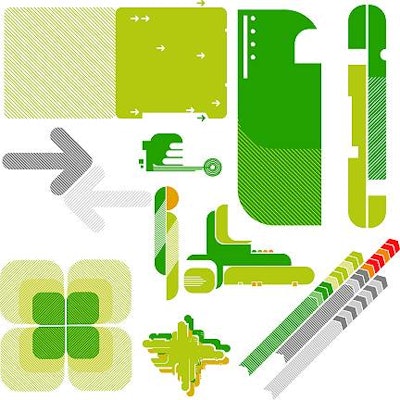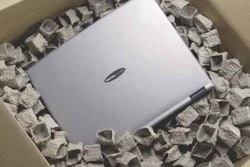
A demographic tidal wave is set to befall consumer packaged goods companies (CPGs) and package designers. If you haven’t heard about the aging boomers in this country, and throughout the developed world, you’ve been living under a rock. Recognizing the purchasing power of these consumers (both in terms of disposable income and sheer numbers), CPGs are scrambling to serve them.
As a result, you’ve been seeing articles about topics like ease of use, designing for aging consumers’ needs and universal design (we outlined universal-design philosophy in the January/February 2006 issue of Shelf Impact!). But what techniques are available to help brand managers, marketers, and package designers design and test packages that aging consumers will receive well?
The following techniques provide you with valuable insights to serve both you and your consumers well as you consider package design concepts that are as widely optimal as possible.
1. Checklists. These are prioritized “wish lists” of features that encompass the ultimate package design. The checklist is forged from a variety of perspectives: management, production, consumers, logistics, retailers and marketing. The demands of each group frequently conflict with each other. A retailer may want a package that is difficult to open in order to deter theft while consumers, undoubtedly, will want something that is convenient and easy to open. Prioritization of design criteria and how they impact each individual who touches the package can guide designers to create a package that is as close to ideal for all stakeholders as possible.
2. Self-observation. As the design concept takes form, many designers try to “put themselves in the consumer’s shoes” by using a technique called self-observation. Unfortunately, too many designers rely on self-observation as their default method when creating package design concepts. Even though this technique is fast and relatively inexpensive, the quality of the information used in creating the design is often questionable. The success of self-observation as a method for creating package designs depends upon the quality of the designer’s understanding of and responsiveness to a broad spectrum of consumers.
3. Stimulation. When trying to design packages that work in the hands of aging or otherwise physically limited consumers, simulation is frequently used. This technique involves the use of physical simulators to mimic the effects of functional impairments that consumers with limited motor skills face as they operate different packages. For instance, with aging consumers, commercially available goggle kids can simulate visual impairments such as macular degeneration and cataracts. Gloves containing “stiffeners” can artificially restrict hand movements. Simulation, like self-observation, is inexpensive and quick. Even though simulation is a very useful approach, it is not a replacement for involving real consumers in the design process. Closing your eyes will never be the same as living with blindness, and donning restrictive gloves cannot deliver the same perspective as living with the chronic pain of arthritis. Simulation becomes more powerful when combined with any of the three following three techniques.
• User observation. A thorough test of packages requires that consumers operate them as they would in their normal routine. Ideally, interactions between consumers and packages should be captured by using ethnography—the study of packaging used in a real-life environment such as the consumer’s home, workplace, or grocery store. However, most often user observation is conducted through focus groups or individual testing in other settings, such as a laboratory or a senior center. The assessment is often recorded using video cameras and sometimes it is supplemented by using the “think aloud protocol” in which consumers express their thoughts as they operate a package. A great advantage of this technique is that, since real consumers are involved, the observer needs to make few assumptions about their behaviors.
• Post-trialing. In post-trialing, CPG observers measure usability after a consumer has handled a package. This method includes user interviews, surveys, questionnaires, and performance measurements. Interviews provide a question-and-answer session or comment forum during which consumers describe what they experienced. Interviews are extremely useful for collecting qualitative data. Surveys or questionnaires can be used to gather written post-trialing insights. For both interviews and surveys or questionnaires, the quality of the information gathered relates directly to the quality of the questions asked. Procedures must be carefully thought-out to gather the most pertinent information, as there is no chance to seek clarification or further insight with either of these techniques.
In addition, consider using specially designed performance measurements such as the Universal Design Performance Measures (UDPM). UPDM is a tool based on the seven universal design principles (discussed in the January/February article), and it is developed to identify potential areas for improvement so you can benchmark competing packages against your design and identify the strengths of each package design concept.
• Expert appraisal. An expert with professional experience assesses the package design concepts with consumers who will be using the packaging. This technique depends on the availability of suitable experts and their knowledge of the consumers who will be studied, the package, and of the context in which the package will be used.
The tools available to assess package usability with consumers vary in terms of their requirements of time, effort, and other resources. Brand managers, marketers, and package designers should choose the techniques that are appropriate to their level of commitment to consumers in universal-design packaging, while also considering available resources.
CPGs that go beyond self-observation to test their packages and products will gain a competitive advantage by developing package designs that are more widely useful to consumers with a broad range of motor skills, habits, and desires.
The authors, Javier de la Fuente and Audrey Whaling, are Research Assistants in the School of Packaging at Michigan State University. Laura Bix is an Assistant Professor in the School of Packaging.
To read more about the Universal Design Conference, please go here.

























